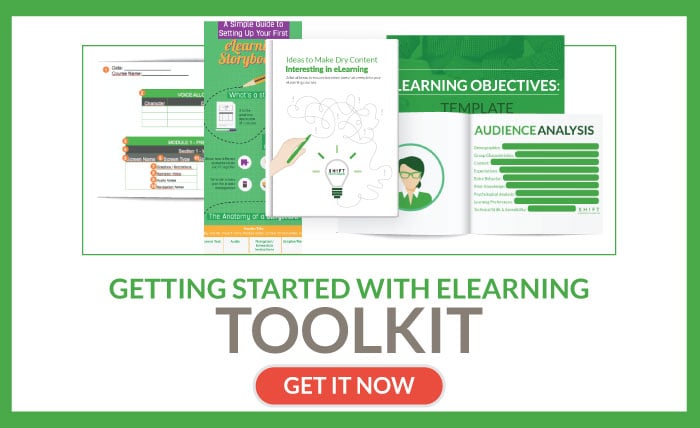To many, the entrepreneurial lifestyle is unendingly alluring. Boasting authority, prestige, and nearly limitless potential, successful entrepreneurs seem to have it all. Yet, before you can decide to become an entrepreneur, you should have an idea of the type of business you will build and manage. Fortunately, we have an awesome business idea for you already: eLearning.
Thanks to the convenience and effectiveness of online courses, the eLearning industry has exploded in popularity in recent years. More people than ever are looking to better themselves through online training, so entrepreneurs in this field will find an ever-growing audience of excited and engaged consumers. However, before you jump into eLearning with both feet, you should learn a bit more about the past, present, and future of the industry.
What is eLearning?
At its most basic, eLearning is education through electronic devices. In recent years, eLearning has come to mean education accessed digitally outside traditional schools, though some eLearning courses are a mix of in-person and online classrooms. Though accessed through computers, eLearning classes aren’t entirely disparate from conventional classes: They may include lectures, reading assignments, projects, participation requirements, quizzes, and exams, just as most students expect.
However, eLearning does provide more options, regarding teaching styles, scheduling, subject matter, and even tuition price, potentially giving online students greater opportunities to succeed. Indeed, the greater availability of eLearning might allow education and training to reach the masses.
Read more: eLearning Jargon Explained: 5 Terms Every Newbie Needs to Know
How Does eLearning Generate Profit?
There are different styles of eLearning businesses. Perhaps the most popular eLearning institution functions not dissimilarly from a typical university: Students apply for programs, pay tuition, and graduate with appropriate degrees.
In fact, many universities are moving their advanced degree programs online to eLearning systems, so you could learn more about eLearning and entrepreneurship by engaging in one of the top online MBA programs.
However, in recent years, another type of eLearning business has gained popularity: the MOOC. Massive Open Online Courses are tuition-less and nearly limitless, so students can enroll in as many MOOCs as they want without worrying about credit-hour maximums. MOOCs are rarely part of degree programs, so they lack the grading structure and attendance requirements of other traditional and eLearning methods.
Yet, instead of being completely free-of-charge, MOOCs function like freemium services; students can access basic courses for free, but earning certificates, taking advanced exams, or using personalized services requires payment.
How Has eLearning Grown?
Though some form of eLearning has existed since computers first appeared in homes, the industry in earnest dates back to just after the millennium. Even then, systems hardly started gaining traction until about a decade ago - but since then, growth has been explosive.
Initially, eLearning targeted adult learners looking for simple training programs, but as mentioned above, these days nearly all students can find online courses appropriate for their academic or career interests. What’s more, eLearning has expanded to new technologies, moving beyond desktop computers to become mobile-capable.
ELearning’s growth is perhaps most obvious in its increases in revenue. In 2009, the industry was worth roughly $27 billion; in 2014, that became over $50 billion, and just a few months into 2017, eLearning is valued at well over $110 billion. Still, the industry continues to grow, offering outstanding opportunities for entrepreneurs.
Check out more eLearning stats here: Facts and Stats That Reveal The Power Of eLearning [Infographic]
What Opportunities Exist for Entrepreneurs in eLearning?
The novelty and flexibility of eLearning make the industry prime grounds for building a business. Depending on your interests and expertise, you can focus your entrepreneurial efforts on any of several aspects of eLearning, such as:
- Course and program design and development by using an authoring tool
- Instructor management
- Student support
Your eLearning business might target niches of specific learners, such as disabled teens or federal employees. You might improve eLearning functionality on increasingly futuristic tech devices, such as VR machines, wearables, or any item in the internet of things. You might build eLearning systems for social learning, including mentoring and tutoring. The possibilities are nearly endless for entrepreneurship in eLearning.
How Do You Succeed in eLearning?
Fortunately, as with other web-based businesses, eLearning businesses are somewhat easier to manage thanks to a wealth of online tools for marketing, data-collecting, reporting, and expanding. However, an eLearning business remains a business nonetheless, so success is built on sound business practices and calculated risks. Smart business plans, strong networks, sufficient funding, and savvy decision-making will help you succeed in this industry.







